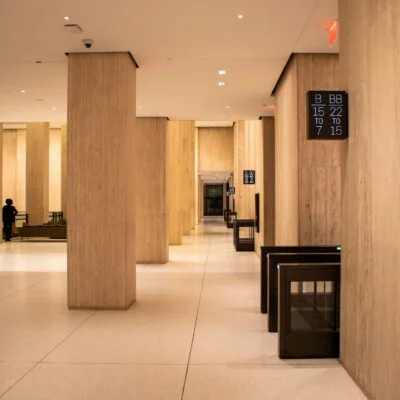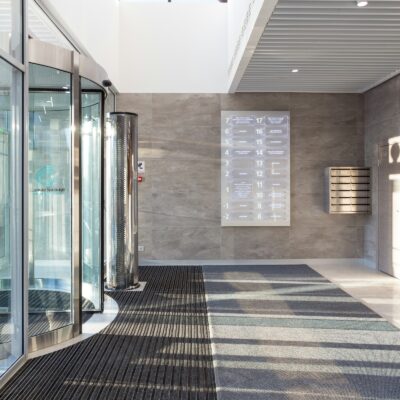- Originally published: May 24, 2023
- Last updated: March 13, 2025
What is a workplace visitor policy?
A workplace visitor policy is a set of rules and guidelines that explain how visitors should be treated when they come to your workplace. It helps ensure that everyone — employees, visitors, and your company — is safe and secure.
For example, your company visitor policy might specify:
- Who qualifies as a visitor — different visitor types and processes, e.g., clients, contractors, delivery drivers.
- Acceptable times for workplace visits and the duration of each stay.
- Check-in requirements, such as signing in, providing ID, or wearing a visitor badge.
- Access rules, like where visitors are allowed to go and whether they need an escort.
- Safety and security protocols including health screenings, emergency procedures, or signing legal documents like NDAs.
- Pre-registration processes for planned visits (if any) to make check-ins faster and smoother.
If you’re not sure what exactly to include, copy the visitor policy template or download the free workplace visitor policy PDF below. The visitor policy template can then be customized with details that reflect your company’s visitor policy, which we’re about to discuss as well.
Workplace visitor policy template
Policy Overview & Purpose
Our visitor policy defines the protocol for admitting guests to our facilities. Our goal is to ensure visitors do not compromise the safety of our premises and property, distract our employees or expose themselves to risk.
Scope
This visitor management policy applies to all employees. The term ‘’Workplace Visitor’’ encompasses personal visitors such as friends and family, as well as contractors, external vendors, stakeholders and the public. This policy does not apply to remote employees or employees from other company locations. However, employees on parental leave must obtain visitor passes to enter our premises.
Policy Elements
Visitor must adhere to the following guidelines:
- Registration: All visitor must sign in at the reception, gate or front office and present identification
- Visitor Passes: Visitors are issues passes which must be returned after their visit
- Employees Accompaniment: Employees are responsible for their visitor while on company premises.
- Compliance with Company Policies: Visitors must adhere to our internet usage, data protection and confidentiality policies during their stay. Misuse of intent, disclosure of confidential information, or authorized photography of restricted areas is prohibited may result in removal or legal action.
Operational Hours
Visitors are permitted during regular working hours. After-hours access requires written authorization from HR or management. Personal Visitors Generally, unauthorized personal visitors are not allowed. Exceptions may be granted by HR, Security Officer, or Office Manager on a case-by-case basis, preferably in writing, although verbal authorization may be given in urgent cases.
Contractors and Service Vendors
Only those coming for official duties may enter. Reception staff will issue appropriate badges and instructions to wear them at all times on the premises.
Other Visitors
Our premises may occasionally host students, investors, customers, job candidates, and business partners, all of whom must have prior written authorization from HR or management and be accompanied by an employee at all times.
Solicitation Policy
In line with our non-solicitation policy, visitors are not permitted to proselytize, solicit donations, engage in donor prospecting, or request participation in activities.
Deliveries
Deliveries should be made to the reception or gate. Employees expecting deliveries must be notified by front office staff, who may receive parcels on their behalf if necessary. Large deliveries should go directly to designated areas, such as warehouses, after security checks.
Restricted Areas
Visitors are not allowed in areas with hazardous materials, confidential records, or sensitive equipment unless they have authorization and the necessary protective equipment.
Unauthorized Visitors
Security personnel will remove any unauthorized visitors. Employees who encounter such visitors should direct them to security or the office manager.
Disciplinary Actions
Violations of this policy by employees will result in disciplinary action appropriate to the severity of the infraction, which may range from verbal warnings to termination.
What should a workplace visitor policy include?
1. Policy overview & purpose. Explain why the visitor policy exists — you can mention improving security, ensuring smooth visitor experiences, and protecting employees, visitors, and workplace assets.
2. The Scope, AKA who the visitor policy covers. Clearly state who the policy applies to, such as on-site employees, remote employees visiting the office, and different types of visitors like vendors, clients, and employees’ family members. Outline separate procedures for different visitor types, and tailor the visitor management process to suit each group’s needs.
3. The protocol, including:
- Visitor authorization. Explain the steps for approving visitors, from the initial invitation to ID verification at the reception desk. Include any requirements for electronic confirmations or pre-registration.
- Check-in process. Describe what visitors need to do when they arrive, such as signing in, providing ID, or wearing a visitor badge.
- Access restrictions. Specify which parts of the workplace are off-limits to visitors and set clear rules to keep sensitive areas secure.
4. Emergency procedures. Include how visitors are managed during emergencies, such as evacuations or lockdowns, and how they will be accounted for.
5. Roles and responsibilities. Define who is responsible for managing visitors, greeting them, escorting them, and ensuring they follow the rules. Clarify what their duties include, especially in emergencies.
6. Data privacy and retention. Set guidelines for collecting, storing, and deleting visitor information to ensure compliance with privacy laws.
Why is a workplace visitor policy important?
A workplace visitor policy is more than just a set of rules — it’s a key tool for keeping your office secure, organized, and welcoming. Here’s why every workplace should have one:
1. Keeps employees and visitors safe
A visitor sign-in policy helps protect your workplace from potential risks by clearly defining who can enter, where they can go, and under what conditions. It also prevents distractions like visitors wandering around or interrupting work. By setting clear boundaries, you create a safe and focused environment for your team.
2. Creates a welcoming experience for visitors
First impressions matter. Whether it’s a potential business partner, a job candidate, or a client, a visitor policy ensures they feel valued from the moment they walk through the door. It outlines:
- Who greets visitors (e.g., front desk staff or other team members).
- Check-in procedures, like issuing badges and connecting visitors to the right person.
This not only protects your workplace but also ensures your guests feel welcome and confident during their visit.
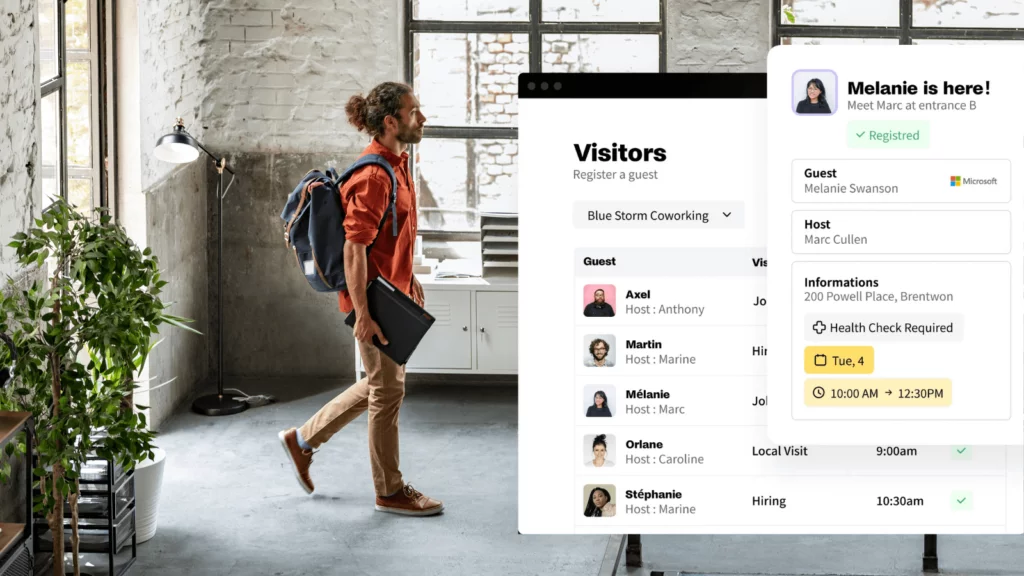
3. Saves time and effort
A clear office visitor policy eliminates the guesswork for your team. Instead of figuring out what to do each time someone arrives, staff can follow the steps outlined in the visitor policy. This saves valuable time and keeps operations running smoothly.
A workplace visitor policy isn’t just about security — it’s about creating a better experience for everyone, from employees to visitors. With clear guidelines in place, you can ensure safety, save time, and deliver a welcoming and professional environment every time.
What is an example of a visitor policy?
Visitor policies are essential for many types of organizations to keep their spaces safe, organized, and welcoming. Here are the most common visitor policy examples:
- Offices and businesses: To manage clients, vendors, and job candidates, ensuring smooth check-ins and workplace security. Here’s a visitor policy example from BMC.
- Schools and universities: To track parents, contractors, and other guests while protecting students and staff. The Outdoors School uses a visitor policy PDF to ensure a safe environment.
- Healthcare facilities: To control visitor access and protect patient privacy in sensitive areas. Scripps Health has a detailed hospital-patient visitor policy.
- Government buildings: To maintain high security for employees, officials, and visitors. Here’s an exemplary visitor policy PDF from the D.C. Department on Disability Services.
- Factories and warehouses: To provide safe and monitored access for delivery drivers, contractors, and inspectors. The BME Group outlines its visitor policies to ensure workplace safety.
- Coworking spaces: To streamline guest check-ins while keeping the shared workspace secure. Aurelius Coworks includes visitor policies in its health and safety procedures.
- Event venues: To efficiently manage attendees, vendors, and staff, ensuring smooth event operations. Lightbox Productions follows a visitor security policy to keep events running smoothly.
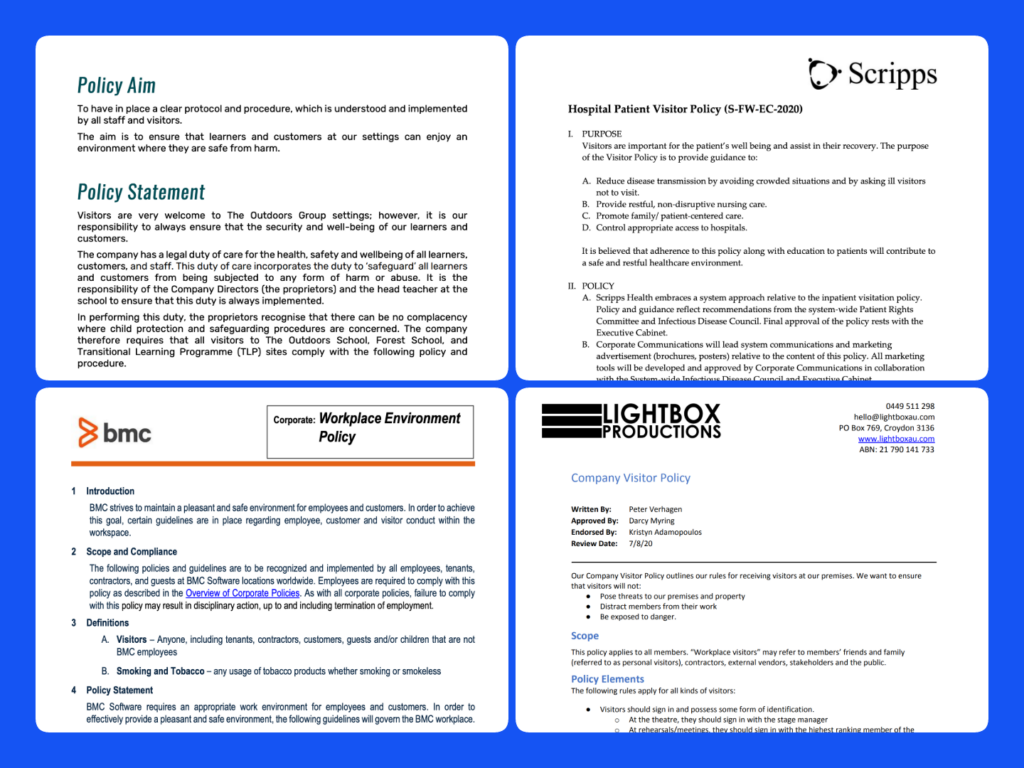
How to create a workplace visitor policy?
1. Write a company workplace visitor policy
- Define who can visit. Decide which types of visitors are allowed, such as clients, job candidates, contractors, or delivery personnel. You may need different rules for different groups, like requiring ID for contractors or limiting social visits.
- Set up a check-in process. Make it easy to track who enters your office. Visitors can sign in using a receptionist, a sign-in sheet, or a digital check-in system. If needed, provide visitor badges so they can be easily identified.
- Ensure safety and security. Visitors should follow basic office security rules, such as wearing badges, staying in designated areas, or being escorted by an employee. Make sure they are aware of emergency procedures and safety guidelines.
- Protect confidential information. If visitors might have access to sensitive company information, require them to sign a Non-Disclosure Agreement (NDA). This is especially important for contractors, vendors, or business partners.
- Set clear visiting hours and restrictions. Decide when visitors are allowed in the office and if there are any restrictions, such as access to certain areas. Limiting visiting hours can help manage security and prevent disruptions.
Writing down visitor management guidelines is just the first step — ensuring they are understood and followed is where the real work begins. Here’s how to put your policy into action effectively:
2. Communicate the visitor policy
Start by sharing the new visitor policy PDF with your employees. Explain why it’s important, focusing on how it benefits them, like improving safety and reducing distractions. Let them know:
- The policy now exists and why it was created.
- Where they can find it for future reference.
Encourage discussions to address any questions or concerns and gather feedback to identify areas that may need clarification or improvement.
3. Train your team
Organize short training sessions to walk employees through the policy. Cover key sections, such as:
- Visitor check-in procedures.
- Roles and responsibilities for managing visitors.
- Security protocols for different visitor types.
These sessions give your team the chance to ask questions, share concerns, and understand their part in implementing the policy.
4. Use visitor management software
Bring your policy to life with the right visitor management system. This software helps automate and streamline the process by:
- Sending visitors key details before their visit, like parking info, check-in steps, and ID requirements.
- Logging visitors electronically.
- Notifying hosts when their guests arrive.
- Issuing visitor badges for easy identification.
- Ensuring all visits are tracked and monitored.
A visitor management system like Archie’s has multiple benefits. It makes implementation easier while improving workplace security and ensuring consistency.
Company visitor policy FAQ
They should follow your visitor management policy. Usually, the process comes down to:
- Pre-registering the visitor: Use the workplace’s visitor management system like Archie to pre-register the guest. Include details like the visitor’s name, contact info, purpose of visit, and expected arrival time.
- Providing pre-visit information: Share important details with the visitor, such as parking instructions, ID requirements, or check-in procedures, so they’re prepared when they arrive.
- Being available at the scheduled time: Ensure you’re available to greet your visitor promptly and help them feel welcomed.
- Escorting the visitor: Meet your visitor at the reception or check-in kiosk and escort them to the appropriate location. Ensure they stay in authorized areas.
- Ensuring check-in compliance: Make sure the visitor completes any required steps, such as signing in, showing ID, or wearing a badge.
- Being aware of emergency procedures: Familiarize your visitor with any relevant safety protocols, like evacuation routes or emergency contacts, in case of an incident.
Deliveries in a company are usually handled by a receptionist or through a dedicated system. When a package arrives, it’s logged, and the right person is notified to pick it up. Some companies use a mailroom, reception desk, or smart lockers where employees can collect their deliveries at their convenience. Visitor management systems or package tracking apps help streamline this process by automatically alerting recipients when their package is delivered.
Choosing the right visitor management system doesn’t have to be complicated if you focus on your needs and what the system offers. Look for features like touchless check-ins, real-time notifications, customizable workflows, visitor badges, and integrations with tools like calendars or access control systems. A good system should also prioritize data security and compliance to protect visitor information.
If you’re looking for a flexible, affordable, and simple-to-use solution for visitor management and beyond, Archie is a top choice.

Berenika Teter
Archie's Content Manager, fueled by filter coffee and a love for remote work. When she’s not writing about coworking spaces and hybrid workplaces, you can probably find her exploring one.





















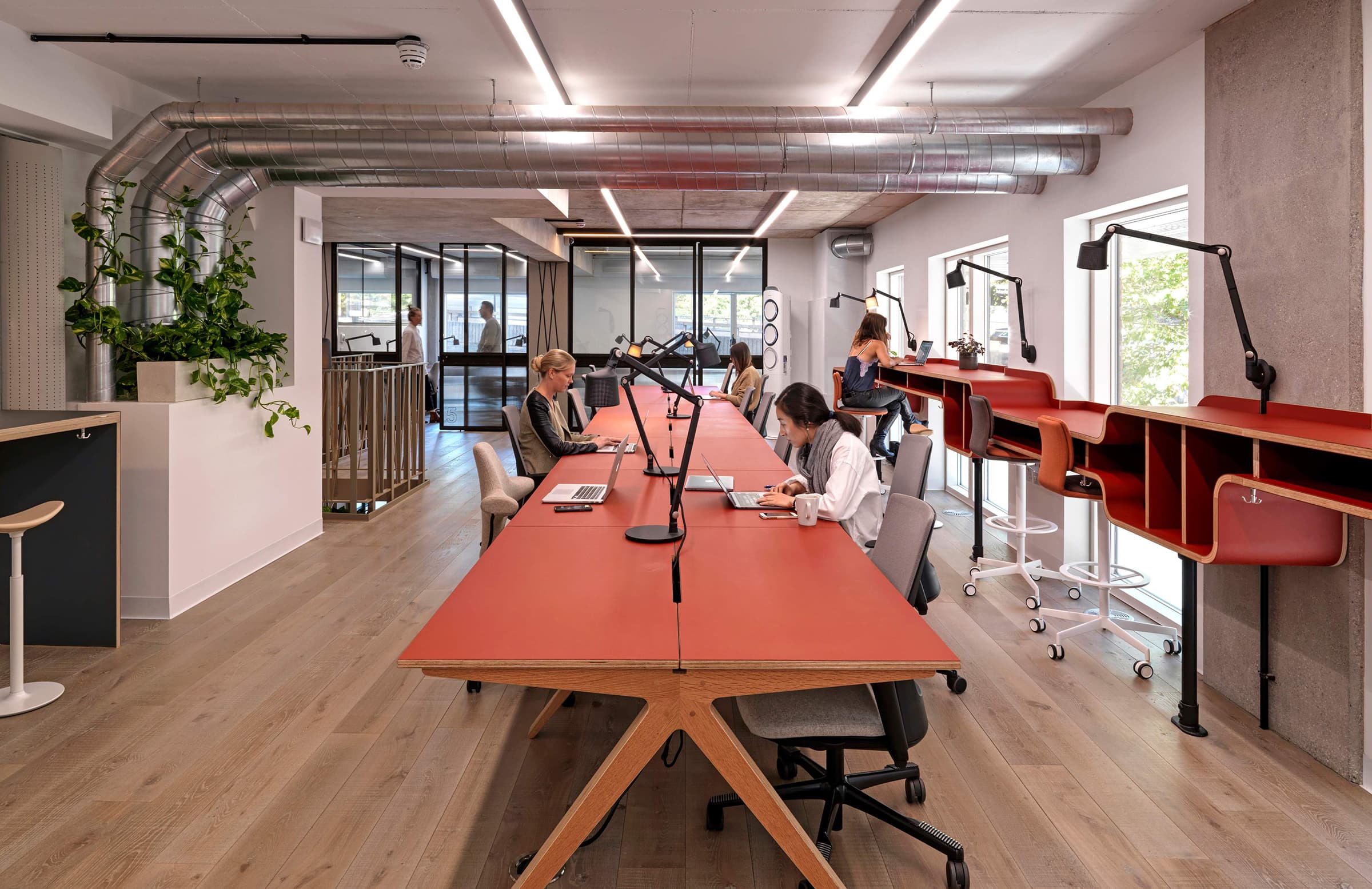
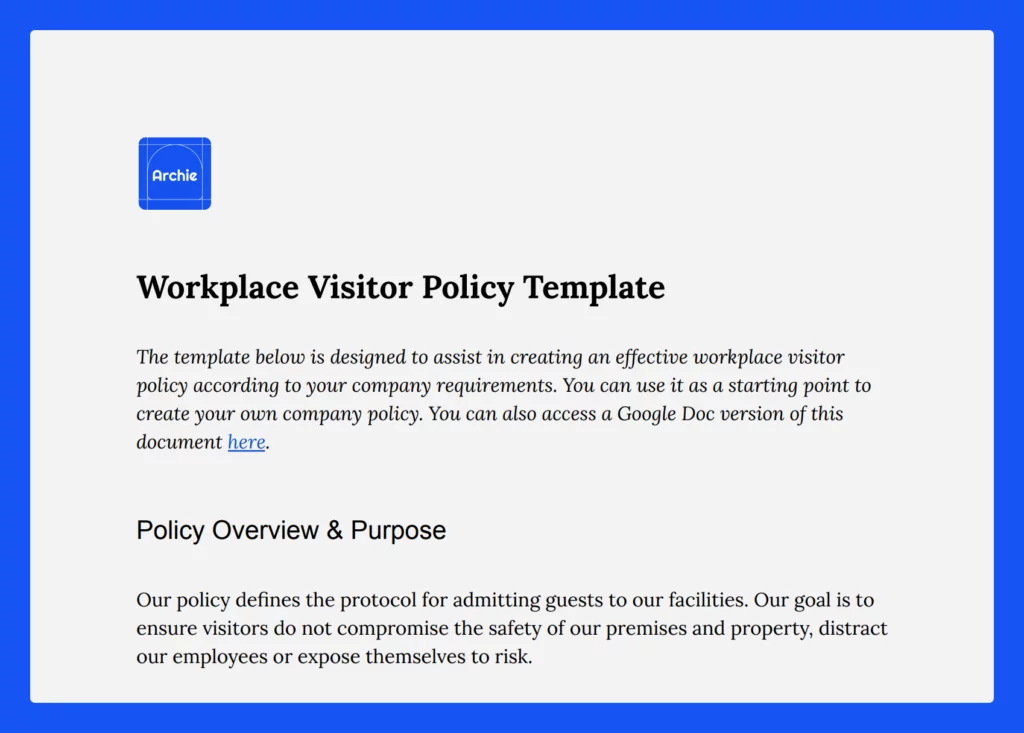

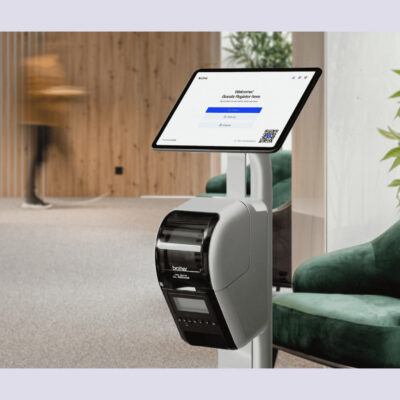
![SwipedOn: Visitor Management App Review [2026 Guide] Interior of a modern building with exposed concrete, brick walls, and a central staircase surrounded by glass doors and classrooms.](https://archieapp.co/blog/wp-content/uploads/2025/11/SwipedOn-visitor-management-app-review-cover-image-400x400.jpg)
